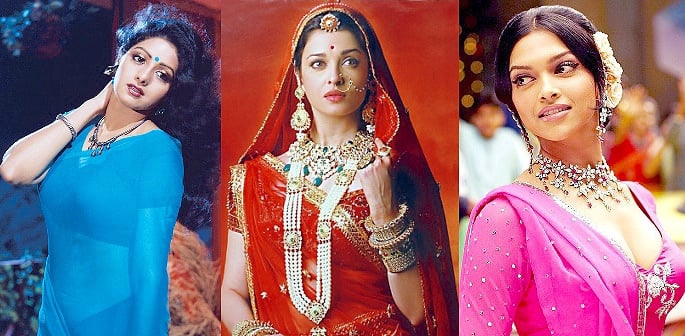The Influence of Social Media on Fashion: Shaping Trends and Personal Style
In today’s digital age, social media has become a powerful force in shaping nearly every aspect of our lives, including fashion. Platforms like Instagram, TikTok, Pinterest, and Twitter have transformed how we perceive, consume, and create fashion. What was once dominated by traditional fashion houses and magazines is now a vibrant, dynamic space where influencers, celebrities, and everyday users play a significant role in setting trends and defining style. This blog explores the profound influence of social media on fashion, examining how it has revolutionized trends, empowered individual expression, and altered the fashion industry’s landscape.
RX REJUVENATE, THE BEST SKINCARE CLINIC LOCATED IN NORTH DELHI IS ONE OF THE GREAT SUPPORTER AND FOLLOWER OF SOCIAL MEDIA’S IMPACT ON FASHION WHICH LEADS THE PATHWAY TO NATION’S EMPOWERMENT AND ENCOURAGING US TO DELIVER MORE EFFICIENT AND TARGETED RESULTS TO OUR CLIENTS.
1. Trendsetting and Trend Cycles
Social media platforms are at the forefront of trendsetting, significantly shortening the lifecycle of fashion trends. Unlike traditional fashion cycles that operate on seasonal schedules, social media-driven trends emerge rapidly and can change almost overnight. Fashion influencers and celebrities use their platforms to showcase the latest styles, often creating viral moments that drive consumer interest and shape the next big trend.
- Example: Instagram has become a hotspot for fashion influencers to flaunt their outfits, often collaborating with brands to promote new collections. A single post from a prominent influencer can lead to a surge in demand for certain items, as seen with the popularity of “Instagrammable” pieces like oversized blazers and neon-colored accessories.
 2. The Rise of Influencer Culture
2. The Rise of Influencer Culture
Influencers have become central figures in the fashion world, bridging the gap between high fashion and everyday consumers. These individuals, with their vast online followings, have the power to shape perceptions and dictate what’s considered fashionable. Their endorsements, outfit choices, and collaborations with brands often drive sales and influence public opinion.
- Example: Influencers such as Chiara Ferragni and Danielle Peazer have leveraged their social media platforms to become style icons, collaborating with major brands and launching their own fashion lines. Their authentic content and personal style resonate with millions of followers, making them key players in the fashion industry.
3. Empowering Personal Style
Social media has democratized fashion, giving individuals the power to express their personal style and influence trends. Platforms like Pinterest and TikTok allow users to share their unique outfits, DIY fashion projects, and styling tips, encouraging others to experiment with their style. This shift has led to a more diverse and inclusive fashion landscape, where individual expression is celebrated.
- Example: TikTok has popularized trends like the “thrift flip,” where users repurpose second-hand clothing into trendy new pieces. This trend highlights how social media empowers users to embrace creativity and sustainability, challenging traditional fashion norms.
4. Instant Access to Fashion Trends
Social media offers instant access to fashion trends and inspiration. Users can follow fashion shows, celebrity outfits, and street style from around the world in real-time. This immediate access to global fashion trends allows individuals to stay updated and incorporate new styles into their wardrobe quickly.
- Example: During fashion weeks, designers and brands use social media to livestream their shows and share behind-the-scenes content. Fashion enthusiasts and consumers can experience the latest collections as they are unveiled, often leading to immediate buzz and anticipation for new trends.
 5. Direct Consumer-Brand Interaction
5. Direct Consumer-Brand Interaction
Social media has transformed the way consumers interact with fashion brands. Brands use these platforms to engage directly with their audience, gather feedback, and build a community around their products. This direct interaction helps brands understand consumer preferences and tailor their offerings accordingly.
- Example: Many fashion brands now use Instagram Stories and TikTok to showcase new products, run polls, and respond to customer inquiries. This level of engagement fosters a sense of connection between the brand and its audience, enhancing brand loyalty and driving sales.
6. The Impact of User-Generated Content
User-generated content (UGC) plays a significant role in the fashion industry, with consumers creating and sharing content that features fashion products. This organic content often serves as authentic endorsements, influencing others’ purchasing decisions and shaping brand perception.
- Example: Hashtags like #OOTD (Outfit of the Day) and #FashionHaul allow users to share their fashion choices and reviews, providing valuable social proof for brands. Fashion brands often repurpose UGC in their marketing campaigns, leveraging the credibility and relatability of real customers.
7. Challenges and Criticisms
While social media has revolutionized the fashion industry, it also presents challenges and criticisms. Issues such as the fast fashion cycle, unrealistic beauty standards, and the impact on mental health have been raised. The pressure to constantly showcase new outfits and keep up with trends can contribute to consumerism and environmental concerns.
- Example: The rise of influencer culture has also led to concerns about the authenticity of sponsored content and the impact of unrealistic beauty standards on self-esteem. Many advocates are calling for greater transparency and responsibility in how fashion is portrayed and marketed on social media.
 8. The Future of Fashion on Social Media
8. The Future of Fashion on Social Media
The future of fashion on social media is poised to be even more dynamic and interconnected. Emerging technologies such as augmented reality (AR) and virtual reality (VR) are expected to enhance the online shopping experience, allowing users to virtually try on clothes and interact with fashion in new ways. Additionally, the rise of social commerce will further blur the lines between social media and retail, making it easier for consumers to shop directly from their feeds.
Conclusion
Social media has profoundly impacted the fashion industry, transforming how trends are set, how personal style is expressed, and how brands interact with consumers. The democratization of fashion through social media has created a more diverse and inclusive landscape, while also presenting new challenges and criticisms. As technology continues to evolve, social media will undoubtedly play an even more significant role in shaping the future of fashion, driving innovation, and redefining style for a global audience.
.jpg.webp)


